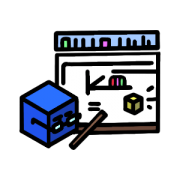<!DOCTYPE html>


Home

Team

Project

Results

Judging

Part

HP

Lab
Home
Results
Judging
Overview
On July 30th, we held a one-hour online educational lecture. Three of our team members popularized synthetic biology knowledge, introduced the purpose and values of the iGEM competition, and promoted TPR_China and our Locust Master project. They carefully prepared the speech, and the lecture went on smoothly as scheduled.

What is this Online Sharing About?
Taking into account the audience’s general understanding of synthetic biology, Lidong Lin first introduced the definition of synthetic biology and what synthetic biology can do from the perspective of a high school student in plain language. He also introduced some goals of synthetic biology and some synthetic biotechnology breakthroughs from a professional perspective.
Next, Duyuan Fang introduced to the audience the top competition in the field of synthetic biology-iGEM which we currently enroll in. He discussed what we are able to learn from the experience of iGEM. For example, we can participate in real scientific research through iGEM competition, which involves design research topics, conducting experiments, constructing wiki, and modeling, It requires us to have a deeper understanding of relevant knowledge. Fang Duyuan also used the 2018 project of GreatBay_China which was a previous excellent team as an example to let the audience better understand what the iGEM competition is like.
Finally, Manli Liu introduced our team TPR_China and our locust project. She mentioned that the inspiration for our project came from the worst locust disaster in East Africa in 70 years at the beginning of this year, with 360 billion locusts. The locust plague is one of the devastating disasters to mankind and the environment today. But the main method of controlling locust plagues is spraying insecticides in the air, which costs a lot and destroys the diversity of the biosphere. So we planned to degrade PAN and finally attract locusts by chemical means to avoid the formation of locust plagues. She concisely summarized the goals, design, advantages, and characteristics of our project.
Reflection: pros and cons
The audience came from different schools, different areas, and even different age groups. In the Q&A session, we interacted very well with the audience. We answered various questions from the audience and gave the questioner a satisfactory answer from a professional perspective as much as possible. So we finally won unanimous praise and great feedback from the audience.But the only shortcoming is that the number of the audience attending the publicity lecture did not meet our expectations, so we summarized several things that we can improve:
1.The topic of the lecture is professional.
People are not familiar with the new field "synthetic biology". So we can start with the professional vocabulary that most people know. For instance, as introducing the definition of synthetic biology, we can say like "synthetic biology is doing the work of putting DNA and protein parts together to form biological circuits in a manner analogous to making electrical circuits from transformers, capacitors, and the like". Also, more use of analogies and other techniques enable people to better understand the concepts.
2.The content and format of the lectures can be improved
Since the Q&A session of this event is more prominent, we decided to focus more on cooperation and communication in the future. We invited Academician Gao Fu for the next activity and successfully held an online event with the basis of expert lecture and cooperation, further expanding our influence and widening our appeal.
Improvements
To let people better know about our project and pay attention to the locust plague next time, we launched an online questionnaire about people’s awareness of the locust plague. Meanwhile, we carried out the project publicity and activities for the popularization of knowledge about locust plague. We also designed posters and business cards to invite more people to learn about our team and projects.

Introduction
On August 28, 2020, TPR-CHINA participated in the 7th CCIC Online Summit as one of the teams focused on locusts. The final presentation was simulated in the form of lecture, poster, presentation and workshop, and our project design and results were initially displayed to other IGEMers in our country.

What did we do?
CCIC is a national summit spontaneously formed by my country's IGEM participating teams. It aims to provide a platform for resource sharing among participating IGEM teams and promote mutual learning and communication.
During this CCIC participation, we made a complete video of the project introduction: the logic of our project was connected in the form of video; in addition, we made the corresponding poster for the first time, and we found out the shortcomings in design of poster through comparison with other teams , hope to make improvements in the subsequent project process.

Further Communication
In particular, this summit divided all teams related to locust research into the same display period and designed a workshop session. With this, we learned about the solutions proposed by other teams in the face of the locust plague problem and contacted the CAU-China team, hoping to reach cooperation in the future. This meeting had encouraged us to communicate about our project design and our experience during IGEM, which enable all of us to see the bigger picture of IGEM, of synthetic biology research and project. With the linkage established those days we have reached long-termed contact with other teams. Help to solve problems during this competition.

Why did we conduct this on-line seminar?
Under the background of epidemic, to make our contribution on the development of synthetic biology, TPR-CHINA participated in and co-organized the online lectures released by TongYiQiYuan and invited the academician Gao Fu to give a lecture on "A Brief History of Humans and Hospital Microbes". This lecture emphasized the importance of synthetic biology and the important role of disease prevention and treatment . This lecture is consistent with our popular topic, COVID-19 epidemic. Our primary goal is to attract more young scholars to join the research of life science and synthetic biology and share our knowledge with others. With the foundation of this online lecture, we initially attracted more than 100 scholars and researchers of different stages to join the community to learn synthetic biology and life science knowledge from each other or together. From now on we hope to have more activities in the future and more exchanges in ideas within this group.

What is this Seminar About?
As an important subject of modern biology, synthetic biology has played a pivotal role in interdisciplinary fields. For example, epidemiology currently uses a large number of synthetic biology as a tool. Nowadays, all mankind is making every effort to develop a COVID-19 vaccine, and it has demonstrated its vitality while trying to strengthen the prevention and control of infectious diseases. From the perspective of Mr. Gao as an expert in the field of virus structural biology, synthetic biology, as a representative of the third life science revolution, as a tool discipline for human manipulation of genes and proteins, will surely become an important part of the coordinated development of humans and microorganisms in the 21st century.

Further Discussion
However, the strength of synthetic biology is destined to be a double-edged sword. The potential behind these synthetic biology enlighten us to go out of the laboratory and try to bring more and more opportunities for people to eliminate their misunderstanding of synthetic biology. Through this lecture activity, we have gained the attention of 107 online audiences. With the help of TongYiQiYuan, we appealed for more young scholars like us to join the research of synthetic biology, and we have initially established such an online community with expert lectures and cooperation and exchanges as the link. The online form of the community is well adapted to the current epidemic situation. This style of office work also provides more convenience for resource sharing. We plan to use this community to extensively explore the use of life sciences in the face of the epidemic, from the science of self-protection to the science of synthetic biology in vaccine development. Specific applications, and hope to attract more people to join in the study and contribute to the joint prevention and control of the epidemic.
Finally, this online lecture has been compiled by the TongYiQiYuan and published as a public article. Till the completion of these words, more than 261 people have read it. We are looking forward to sharing more content like this with others.
Linked Article
Acknowledgement
We appreciate the main organizer: TongYiQiYuan for its full present of support on TPR_China and the huge effort it made in order to accomplish this activity successfully.

Subscription Official Account

As a project team focused on locusts plague, we hope to address public attention of iGEM and locust plague through our project. We also wanted to inspire people to know more about synthetic biology. To cover those intentions, we established our own subscription official account and regularly post popular science articles on it. Currently, our official account gained 15,000 viewers in total in 3 months.
Moreover, our most clicked article gained 8000 views in total, and we got 200 active followers. All these measurements indicate that our team has successfully connected to the public and got positive feedback. At the same time, because of the Corona Virus Pandemic, our official account became the best choice for us to promote our activities in a safer manner.

The articles we published are highly related to locusts, and contain several advantages:
1. The articles strive to eliminate the cognitive gap between us and the public.
Since that our official account is set to make science more attachable, our target users are normal people, and the topics we picked or the narration style we used are adjusted to the public. For example, we used simple language to describe terminologies. In our first article, we listed what people might think synthetic biology can accomplish (say, design an organism), to draw public's attention and further discussed the boundaries of synthetic biology.
By explaining why our team, consisting of high school students, can use synthetic biology approach to conduct projects, we further discuss the application prospects of this field. Considering the public are familiar with scientific movies, the public felt engaged in the introduction part of our article, thus our article got great attention after it was published. As a result, the public started to pay attention to us. We used the same narration style in other articles to express user friendly information to the public.
2. The articles keep up with real-time occurrences, and are not limited by popularize science.
By doing so, we deliver effective information to the public. As an official account in the form of self-media, we strive to make our articles have unique values and perspectives. After the publication of the 4VA article by the Kang Le Academician, we found the doctor Kang Le for an interview (link iHP), and compiled the interview content and literature interpretation into the form of an article and published it on the public account. Since the Nature article of the Academician of Kang Le has attracted a lot of attention, our article tried to start with the question of "Why locusts cannot be solved by eating" from the public's point of view, and aroused certain readers' response.
3. To achieve two-way communication.
After the unsuccessful education promotion, we updated our reflection on the public account as soon as possible, and initiated an online solicitation of lecture content to better improve our future education promotion activities. At the same time, we also published a questionnaire on the official account, and through the questionnaire, we also found that the user group of the official account is basically not a very professional person in the field of synthetic biology, which further proves that we are really connected to the public.
Video
At the same time, we also created an account belonging to our team on bilibili (China's largest teen video platform), and uploaded some lab daily vlogs , as well as our promotion video. At present, the total number of viewers has reached 7,000. Our goal is to use video, which is a more intuitive and attractive way, to let everyone understand the experimental routine of synthetic biology and the principles of our project, so as to stimulate the public's interest in synthetic biology.
Summary
In short, from the official account to the video, we promoted our project to the public, achieved a certain educational significance, and established a good impression of the public on iGEM.

